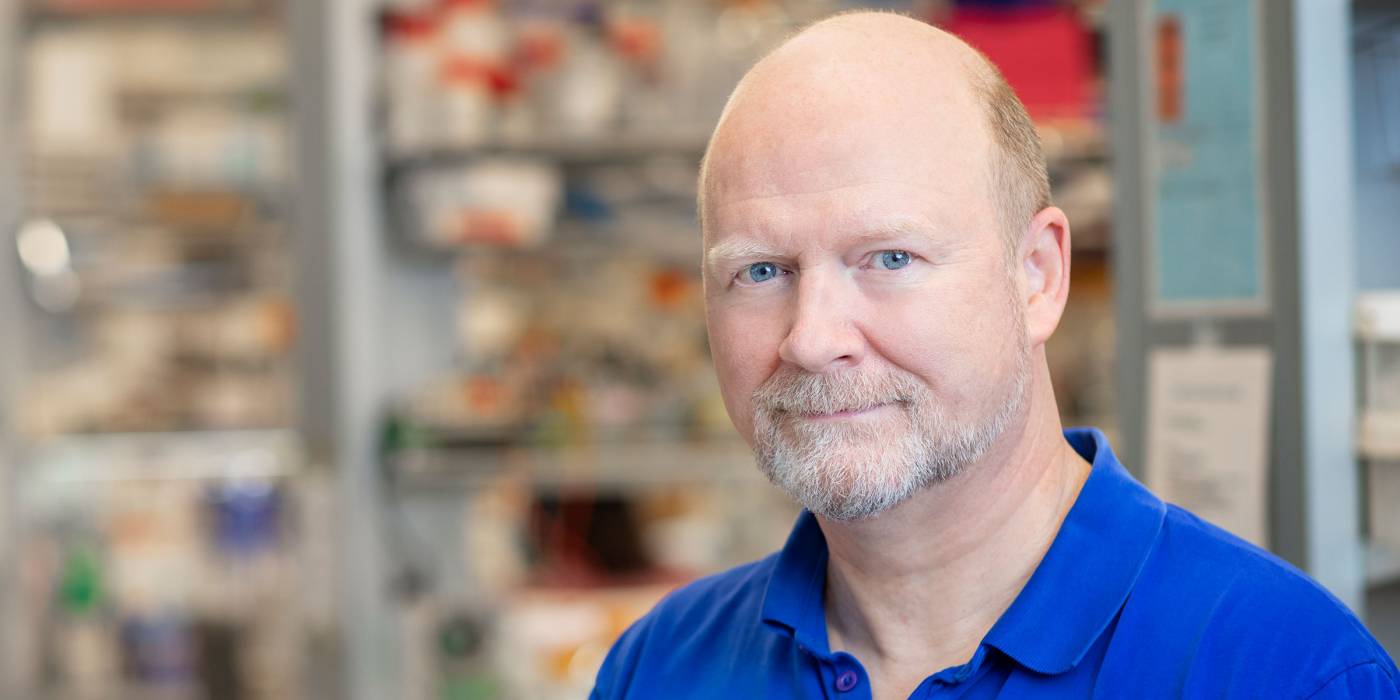Michael P. Rout, Ph.D.
George and Ruby deStevens Professor
- Laboratory of Cellular and Structural Biology (opens in new window)
Nuclear pore complexes control the passage of molecules into and out of the nucleus, regulating how DNA communicates with the rest of the cell. Rout is interested in how the nuclear pore complex mediates this transport and controls the organization of the nucleus, and in the nature of diseases associated with alterations in it. His lab is also collaborating to develop technology to map and interpret the dynamic molecular interactions in cells.
Using a variety of techniques, Rout and his colleagues are studying the structure of nuclear pore complexes (NPCs) and relating their structure to sites of interactions and reactions with soluble nuclear transport factors. Ultimately, they hope to gain a better understanding of the roles NPCs play in gene expression, nuclear regulation, and maintenance.
A full understanding of how NPCs mediate transport and help regulate the nucleus requires a comprehensive inventory of their molecular components, knowledge of how each component contributes to the overall structure, and information on the interactions NPC proteins have with components of the mobile phase of nucleocytoplasmic transport. Rout and his colleagues have catalogued the components of the yeast NPC and determined that it is composed of a surprisingly small number of proteins whose size and high degree of overall symmetry account for the NPC’s large mass.
By systematically isolating and analyzing the subcomplexes of proteins making up the NPC, and by isolating the entire NPC as a whole, they have computed three-dimensional maps of its architecture, sufficient to resolve its molecular organization. This mapping has exposed similarities between structures in coated vesicles and those in the NPC, supporting a hypothesis for their common evolutionary origin in a progenitor protocoatomer. Moreover, the map reveals an extensive underlying modularity in the architecture of the NPC, suggesting that repeated duplication events led to the evolution of its final architecture. They have also shown how the scaffold of the NPC resembles the structure of a suspension bridge, providing both strength and flexibility to the assembly. The lab is now continuing their work to characterize the NPC’s architecture with the highest level of precision.
In a similar fashion, Rout and his colleagues are studying members of the mobile phase, focusing on the kinetic behavior of nup-transport factor and transport factor-cargo interactions using a variety of approaches. These results have already indicated a mechanism for nuclear transport. Rout’s ultimate goal is to integrate ultrastructural and biochemical studies to understand the molecular basis of the translocation of different transport factors across the NPC. He aims to reconstitute key reactions of these processes in vitro, study the high-resolution structures mediating the transport processes, and test possible mechanistic models in vivo to understand the complete sequence of events during a transport cycle.
With his colleagues, the Rout laboratory has also been developing the methodologies required to obtain a comprehensive map of protein interactions within any organism, and to study their dynamic behaviors. This will allow researchers to explore the utility of the technology for functional elucidation of complex biological processes, with an initial focus on cell cycle control, transcription, oncogenesis, and viral infection. Rout and colleagues are also investigating nanobodies, a class of small antibody-like molecules found in camels and related species, for potential use in a rapid point-of-care diagnostic or as a therapeutic for SARS-CoV-2.
Rout is a faculty member in the David Rockefeller Graduate Program, and the Tri-Institutional M.D.-Ph.D. Program.
